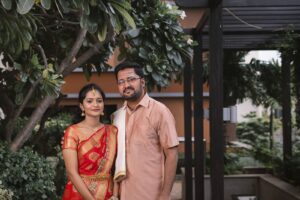Hindu weddings are rich in custom, decoration, tradition, values, and symbolization.
A Hindu wedding is the most sacred with various traditions and rituals observed and celebrated during the process leading to the wedding day. Hindu weddings may last for 3 days but the modern Hindu wedding may be a highly celebrated affair with time-consuming.
Uniqueness In Hindu Wedding based on Region and Cultural Influences:
The word wedding is referred to as ‘Vivaaha’ in Sanskrit and ‘Kalyanam’ in Tamil.
By region and community Hindu wedding rituals and processes widely vary. The core of the Hindu wedding is a Vedic Yajna ritual. The universal key three rituals are
- Kanyadan – Giving away of his daughter by the father.
- Panigrahana – Voluntarily holding hands near the fire and 3Knot to signify union.
- Saptapadi – taking seven complete circles around the fire.
In the modern-day Hindu wedding maybe a day event or 3 days event depending on the region and community the celebration and rituals vary. Basically, the wedding celebration is a Pre-wedding celebration, Wedding celebration, and Post-wedding celebration, these three celebrations have different functions involved.
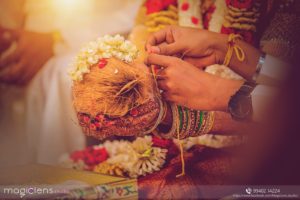
Pre-Wedding Functions and Celebration:
Tilak:
Tilak is nothing but applying the red paste of Kumkum on the groom’s forehead by the bride’s family member like the father or the brother. Tilak celebration various among the Hindu based of the caste and region of the family and is celebrated in the groom’s home. Tilak ceremony symbolizes that the bride’s family has accepted the groom and it creates a unique bond between both families.
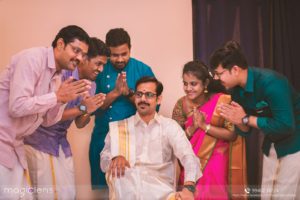
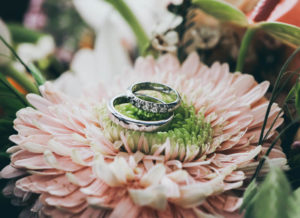
Nichayathartham OR Lagna Patrika:
This event is close to Western engagement is referred to as Nichayathartham in south India and Mangni in northern India. This function is celebrated in the grand way where the families of both the groom and bride meet each other and both the family formally make an official announcement to the family and friends about the marriage between the both.
Rings are exchanged Between the Bride and the Groom.
A wedding date is confirmed at this time and the priest read a letter called ‘Lagna Partia’ which contains the details of the wedding date, venue, bride and groom family details like parents, grandparents, aunt, uncle, and siblings.
Ganesh Puja:
Lord Ganesh is considered the first god and believed to remove all the obstacles, so prayer or worship is performed before the beginning of the auspicious celebrations. This is performed a few days before the wedding and a traditional Hindu wedding is incomplete without this. The groom and family are part of this prayer and is also prepare the couple for the new beginning.

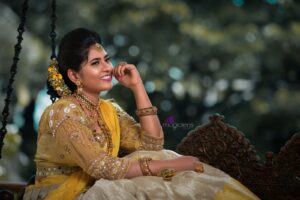
Haldi Function celebration:
Applying the mixture of turmeric paste on the face, neck, hands, and feet of both bride and groom is referred to as Haldi. Haldi is where the full fun and celebration of the marriage began, family members sings and dance whereas the few apply the Haldi. In the Hindu wedding, Haldi holds a significantly important and also believed it product them from ailment and evil eyes. Both of their nervousness is alleviated before the wedding during this Haldi.
Mehendi:
Mehendi is applying the henna paste which is brown in color on the bride’s hand and legs, usually celebrated a day or two before the wedding. The professional Mahendi artist applies to the bride and other family members and is followed by dancing. Traditional the design is of petal or flower, now day customized design as per bride need. It’s believed the dark color of Mehendi and last for a long time to fade shows the bride’s love for to groom and the mother-in-law caring for the son’s spouse.
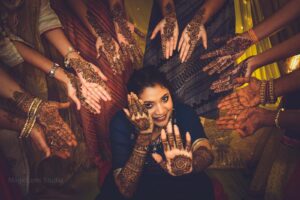
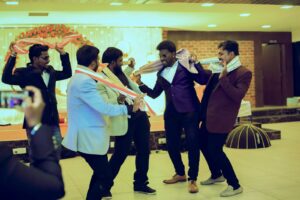
Sangeet Ceremony:
The word sangeet means “Sung together” and is celebrated before the day of the wedding in the bride’s place for welcoming the groom’s family with music and dance. Sangeet celebration varies depending on the region and custom of the Hindu family.
Auspicious Wedding Day or Wedding celebration:
Finally, the D-day planned for a long time has arrived. At the wedding, the bride and groom made sit in front of the sacred fire and the priest chats the mantra where the groom ties the ‘Magalsutra’ or ‘Thirumangalyam’ in the bride’s neck. Family and friends bless the couple with rice and flowers for a long happy married life.
Sindoor is applied to the bride’s forehead to symbolize that she is married.
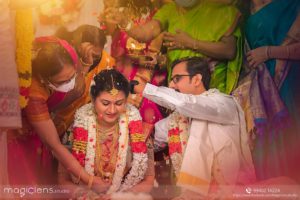
Post-wedding Functions and Celebrations:
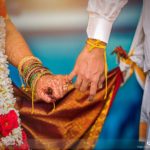
Saptapadi and Ammi Midithal:
One the 3 Knot is over the seven-step of seven vow where the couple holding the hand together are made to circle the fire seven times.
7 Vows or Seven steps in the wedding:
- To nourish each other
- To remain friends lifelong
- To be together forever
- To take care of children and parents
- To share joys and sorrows
- To preserve wealth
- To grow together in strength.
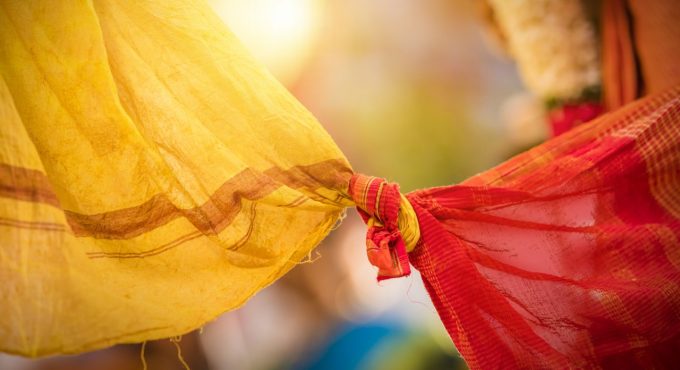
Ammi Midithal
In this the bride is made to step on a grinding stone to signify the bride’s mind to be like rock hard.
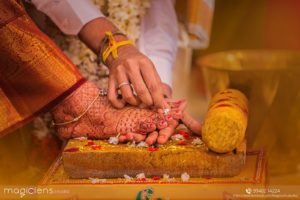
Dhruvadarshan is a ritual where the husband and the wife are requested to see the pole star. The pole stat remains stand-still in the motion of the sky representing that the marriage will remain steadfast in the chaos around the couples.
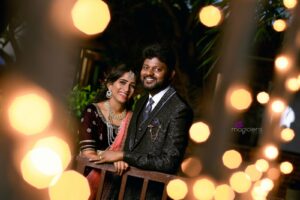
Reception:
Alter the wedding reception if held by both the family’s to bless the couples who have not attended the wedding if it was a closed family celebration.
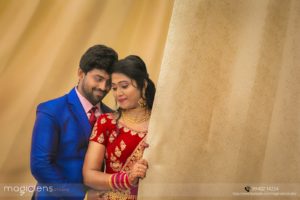
Sammandhi Maryathai and Blessings:
Members of both families endow each other and the bride has an emotional farewell by her family and friends for leaving her fatherly home where she was brought up like a princess. Before the bride leaves for the groom’s home, couples are being blessed by the family members of the couple. The groom accompanies his lady love to his home.
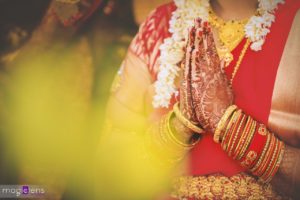
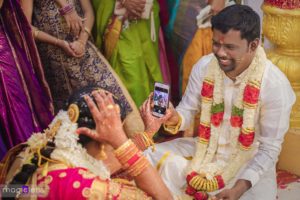
Grihaprvasham and Valeyadal:
Grihaprvasham is a warm welcome given to the bride when she arrives at the groom’s house with arti and escorts her to the puja room to seek the blessing of the family God first. Valeyadal is where a few games are played between the couples to break the ice between them as well as make the bride happy as she has bid a farewell to her fatherly home.
Maruvidu Varudal:
After a few days of the wedding usually three days the couples are invited to the bride’s home and a grand exotic lunch is fed for both. The couple is blessed and gifted with garments by the bride’s parents. With this, the wedding rituals come to an end.
As said the celebration and rituals various based on the region, custom, and the family. In spite of the variation, the wedding function is the most unforgettable memory in the life of both the groom and bride.
